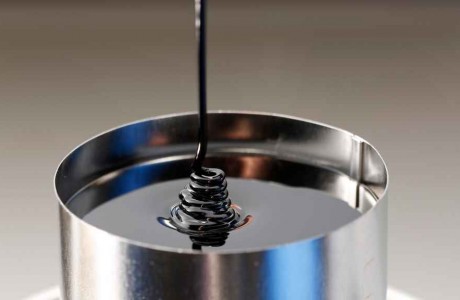
We can provide the product you need or buy the product you want to sell. Our success in the market is the result of an integrated approach to the company experienced management, including a competent marketing policy, delivering high quality products, well-arranged logistic channels, professional financial facilities, innovative company developments and expertise staff, all contribute to make us one of the outstanding companies in fields of Oil, Gas & Petrochemicals. As a trader we take title to the product in line with the agreed terms and ensure the correct logistical solution to take or make delivery.
Our network operations act across many countries such as C.I.S, Middle East, S.E.Asia, Far East Asia, Africa & Europe.
We are always looking forward to establish business cooperation with new clients all over the world.
The trading portfolio includes petrochemical products like polymers, fertilizers, aromatics, chemical bases, gas and oil derivatives.
Petrochemical Products
High-density polyethylene (HDPE) or polyethylene high-density (PEHD) is a polyethylene thermoplastic made from petroleum.
Low-density polyethylene (LDPE) is a thermoplastic made from the monomer ethylene.
Polypropylene (PP), also known as polypropene, is a thermoplastic polymer used in a wide variety of applications.
Polyvinyl chloride, more correctly but unusually poly, commonly abbreviated PVC, is the third-most widely produced synthetic plastic polymer, after polyethylene and polypropylene.
Linear low-density polyethylene (LLDPE) is a substantially linear polymer (polyethylene), with significant numbers of short branches, commonly made by copolymerization of ethylene with longer-chain olefins.
High Impact Polystyrene (HIPS) is a versatile, economical and impact-resistant plastic that is easy to machine and fabricate.
Acrylonitrile butadiene styrene (ABS) (chemical formula (C8H8)x· (C4H6)y·(C3H3N)z) is a common thermoplastic polymer.
General Purpose Polystyrene (GPPS) is a clear polymer that exhibits high stiffness, low specific gravity and excellent electrical properties.
p-Xylene is an aromatic hydrocarbon based on benzene with two methyl substituents with the chemical formula C₈H₁₀ or C₆H₄(CH₃)₂.
Benzene is an important organic chemical compound with the chemical formula C₆H₆.
Styrene, also known as ethenylbenzene, vinylbenzene, and phenylethene, is an organic compound with the chemical formula C₆H₅CH=CH₂.
Methanol, also known as methyl alcohol, wood alcohol, wood naphtha or wood spirits, is a chemical with the formula CH₃OH.
Ammonia, or azane, is a compound of nitrogen and hydrogen with the formula NH₃.
The chemical compound 1,2-dichloroethane (DCE) commonly known by its old name of ethylene dichloride (EDC), is a chlorinated hydrocarbon, mainly used to produce vinyl chloride monomer (VCM, chloroethene), the major precursor for PVC production.
Ethylene glycol is an organic compound primarily used as a raw material in the manufacture of polyester fibers and fabric industry, and polyethylene terephthalate resins used in bottling.
Sodium hydroxide, also known as lye and caustic soda, is an inorganic compound.
Sulfur or sulphur is a chemical element with symbol S and atomic number 16. It is an abundant, multivalent non-metal. Under normal conditions, sulfur atoms form cyclic octatomic molecules with chemical formula S₈.
۱,۳-Butadiene is a simple conjugated diene with the formula C₄H₆. It is an important industrial chemical used as a monomer in the production of synthetic rubber.
Acetic acid, systematically named ethanoic acid, is an organic compound with the chemical formula CH₃COOH. It is a colourless liquid that when undiluted is also called glacial acetic acid.
۱-Butene is an organic chemical compound, linear alpha-olefin, and one of the isomers of butene. The formula is C 4H 8.
Urea or carbamide is an organic compound with the chemical formula CO(NH₂)₂. The molecule has two —NH₂ groups joined by a carbonyl (C=O) functional group.
The chemical compound ammonium nitrate, the nitrate salt of ammonium, has the chemical formula NH₄NO₃, simplified to N₂H₄O₃. It is a white crystalline solid which is highly soluble in water.
Gas & Oil Derivatives
Naphtha is a general term that has been used for over two thousand years to refer to flammable liquid hydrocarbon mixtures. Mixtures labelled naphtha have been produced from natural gas condensates, petroleum distillates, and the distillation of coal tar and peat. It is used differently in different industries and regions to refer to gross products like crude oil or refined products such as kerosene.
Liquefied petroleum gas or liquid petroleum gas (LPG or LP gas), also referred to as simply propane or butane, are flammable mixtures of hydrocarbon gases used as fuel in heating appliances, cooking equipment, and vehicles.
Pyrolysis gasoline or Pygas is a naphtha-range product with a high aromatics content. It is a by-product of high temperature naphtha cracking during ethylene and propylene production. Also, it is a high octane number mixture which contains aromatics, olefins and paraffins ranging from C5s to C12s.

BITUMEN is a thick, dark viscous substance – a natural by-product of the distillation of crude oil with a chemical composition of approximately 80% carbon, 10% hydrogen, 6% sulfur, 1% oxygen and 1% nitrogen. Apart from its use in the construction of roads, BITUMEN is also a powerful sealant used for laying roofs, soundproofing, and waterproofing a wide range of materials; BITUMEN has a wide variety of applications.
We are able to supply 100% pure refinery petroleum desirable penetration BITUMEN grade 40/50, 60/70, and 85/100 or any other requested grades packed in new steel drum, Jumbo bag or bulk.
Specification
- Specifity gravity @25/25 ℃ [D-70]
- Penetration @25 ℃ [D-5]
- Softening Point ℃ [D-36]
- Ductility @25℃ [D-113]
- Loss on heating (wt)% [D-6]
- Drop in penet,after heating % [D-6 & D-5]
- Flash point ℃ [D-92]
- Solubility in CS2 (wt)% [D-4]
- Organic matter ins. in CS2 (wt)% [D-4]
- Spot test [*A.A.S.H.O.T.102]
Bitumen 40/50
- 1.01-1.06
- 40/50
- 52/60
- 100 min
- 0.2 max
- 20 max
- 250 min
- 99.5 min
- negative
Bitumen 60/70
- 1.01-1.06
- 60/70
- 49/56
- 100 min
- 0.2 max
- 20 max
- 250 min
- 99.5 min
- negative
Bitument 85/100
- 1.01-1.05
- 85/100
- 45/52
- 100 min
- 0.5 max
- 20 max
- 232 min
- 99.5 min
- 0.2 max
- negative

